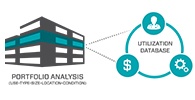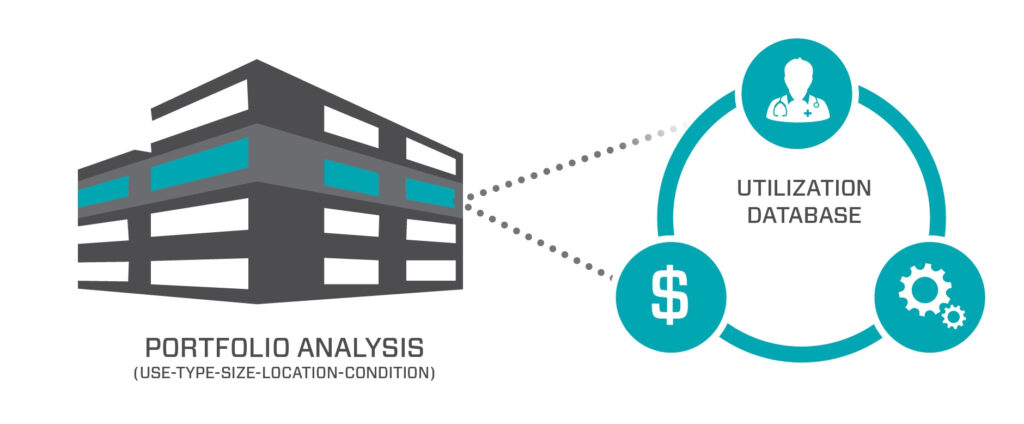Organizations that have taken a long-term view of their physical assets, as well as those that have actively utilized co-programming and urban design strategies to affect the behavioral and economic underpinnings of their community, have benefited greatly from their efforts.

The physical asset valuation matrix is an essential tool for organizational strategy; but to truly realize the cost efficiencies and capacity improvement potential within the existing portfolio we must get deeper and study the individual department utilization within each facility. In an environment of continuous improvement, organizations are periodically re-examining their existing operational models and services to improve efficiencies, both spatial and procedural. These efficiencies can help to reduce costs, improve capacity and throughput, and enhance the patient experience.
A dynamic utilization analysis, one that informs and evolves from a continuous improvement strategy, starts with the creation of a utilization database composed of room inventories (including size and program); departmental layouts and SF allocations (usually in graphic form); staff counts; and operating costs (maintenance, energy and utilities, capital renewal, etc.).
 Using this information, we can build simulation models, or Discrete Event Simulations, that can provide insights into the most efficient and appropriate use of space on a pro-forma basis. These models enable systems to prototype and scenario-test idealized processes and procedure flows, their physical requirements and ramifications, personnel utilization, capacity maximization, scheduling and throughput. Through testing, systems can make informed, data-driven decisions that balance investments, evaluate the potential return on capital and maximize the value to the organization and its client groups.
Using this information, we can build simulation models, or Discrete Event Simulations, that can provide insights into the most efficient and appropriate use of space on a pro-forma basis. These models enable systems to prototype and scenario-test idealized processes and procedure flows, their physical requirements and ramifications, personnel utilization, capacity maximization, scheduling and throughput. Through testing, systems can make informed, data-driven decisions that balance investments, evaluate the potential return on capital and maximize the value to the organization and its client groups.

